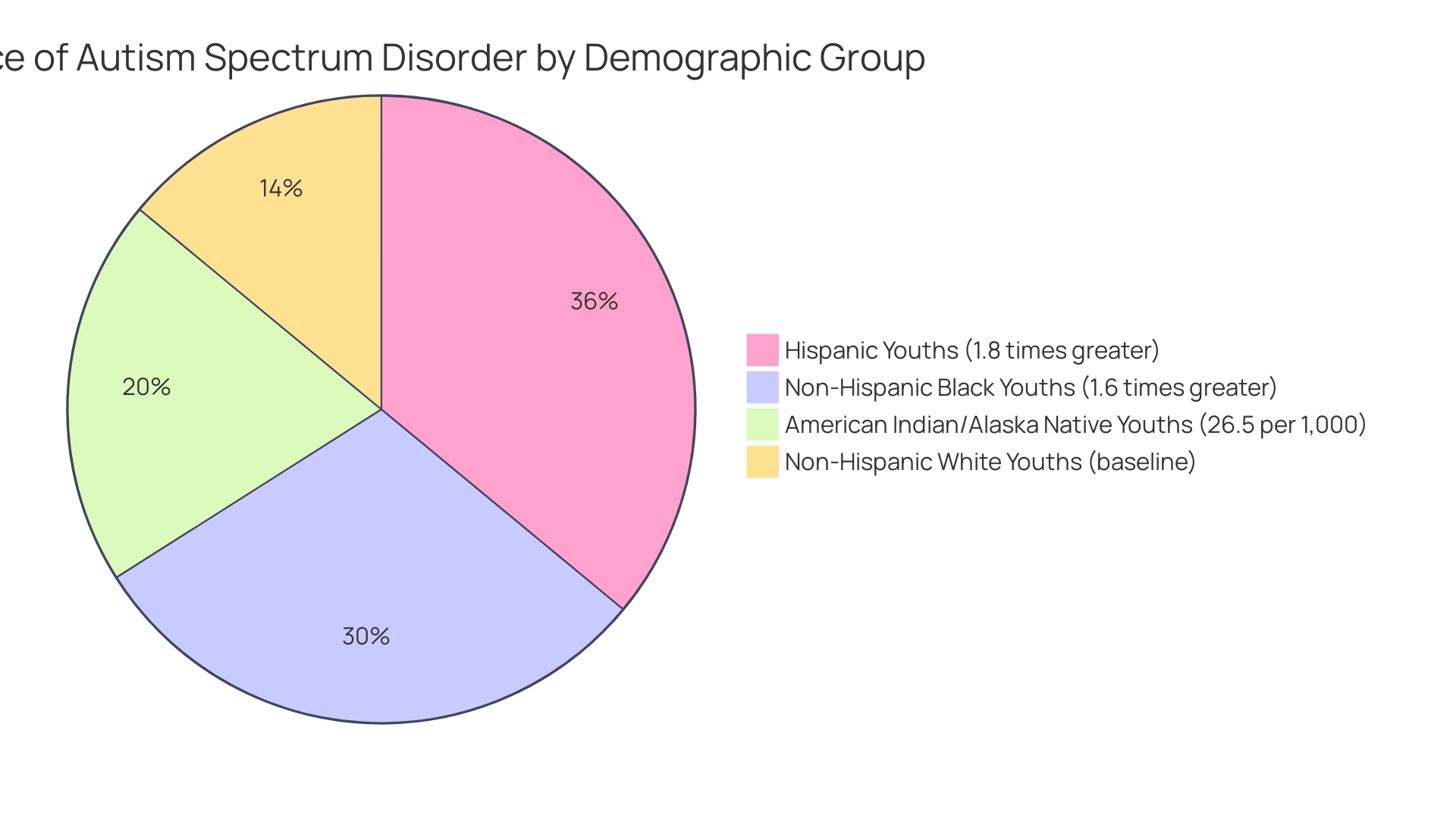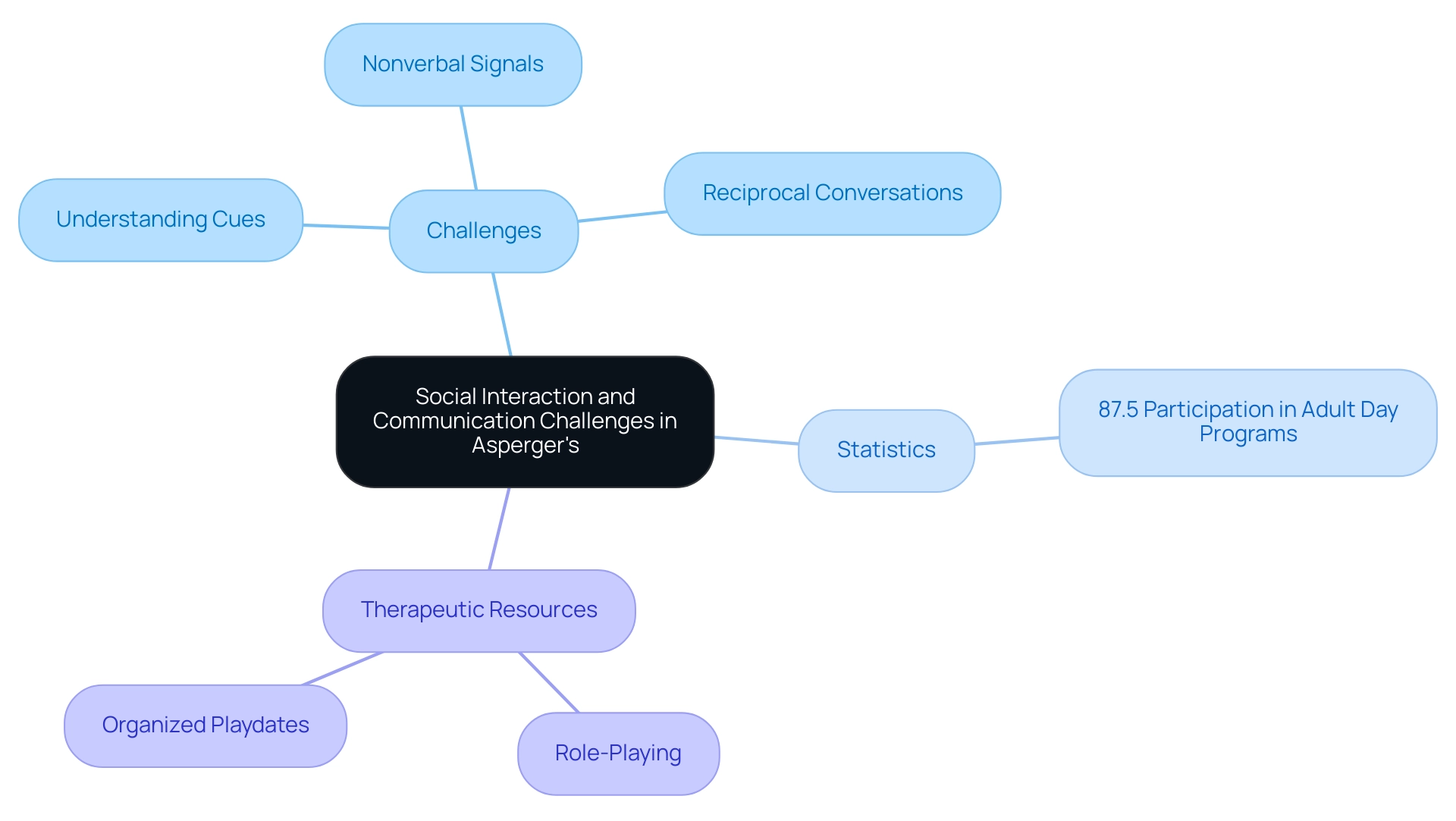Introduction
Navigating the complexities of Asperger's Syndrome can be both challenging and rewarding for parents advocating for their children. This developmental disorder, part of the autism spectrum, presents a unique set of characteristics and hurdles, from social interaction difficulties to communication challenges.
With recent studies revealing significant disparities in diagnosis rates among different demographics, it becomes crucial for parents to remain informed and proactive in securing the necessary resources and support systems. By understanding the nuances of Asperger's, including its diagnostic criteria and the distinct differences from classic autism, parents can foster an environment that nurtures their child's strengths while addressing their challenges.
This article delves into the multifaceted aspects of Asperger's Syndrome, offering insights and strategies that empower parents to advocate effectively and support their children's journey toward social and emotional well-being.
Defining Asperger's Syndrome: An Overview
What's Asperger's? It is a developmental disorder that falls within the autism spectrum and presents unique challenges for those affected. People often ask what's Asperger's, as it is usually defined by challenges in interpersonal interaction and communication, along with a tendency for repetitive behaviors. Notably, they often exhibit average to above-average intelligence and do not experience significant delays in language development, distinguishing them from other forms of autism.
Recent research emphasizes the significance of understanding what's Asperger's, particularly noting that 71.6% of individuals diagnosed with autism spectrum disorders (ASD) possess an ASD ICD code. This information is vital for parents who strive to support their offspring in navigating the complexities of social environments and personal relationships.
Furthermore, a recent study confirmed that the prevalence of ASD is notably higher among minority groups, revealing that:
- Hispanic youths are diagnosed at a rate 1.8 times greater
- Non-Hispanic Black youths at 1.6 times greater compared to their non-Hispanic White counterparts.
- Additionally, the prevalence of autism spectrum disorder among American Indian/Alaska Native youth is reported at 26.5 per 1,000 individuals.
This highlights the necessity for parents to recognize these disparities and advocate for suitable resources and support systems for their offspring.
Real-world examples of successful interventions and support strategies can empower parents to foster their offspring's social skills and emotional well-being, making it imperative to stay informed about the latest findings and expert opinions in the field. Comprehending these dynamics not only supports the personal growth of youth with autism but also enhances parental advocacy in a healthcare environment that can occasionally neglect these essential nuances. The findings from the case study titled 'Racial Disparities in Autism Diagnosis' further illustrate these disparities, highlighting the importance of addressing the unique needs of children from diverse backgrounds.

Diagnostic Criteria and Identification of Asperger's
The Diagnostic and Statistical Manual of Mental Disorders (DSM-5) outlines specific diagnostic criteria for what's Asperger's, which is crucial for effective identification and support. The main criteria include:
- Persistent deficits in communication and interaction across various contexts
- Restricted and repetitive patterns of behavior, interests, or activities
Significantly, these symptoms must be present from an early developmental stage, although they often become more apparent as demands increase beyond an individual's capacity.
In fact, statistics indicate that in 2000, the prevalence of Asperger's Disorder was approximately 6.7 per 1,000 youngsters, equating to 1 in 150. Accurate identification is vital, as it opens the door to appropriate interventions and support services, significantly improving the quality of life for those affected. People with Autism Spectrum Disorder often encounter considerable difficulties in their interpersonal and professional lives, which can result in a reclusive lifestyle and restricted interpersonal connections.
As highlighted by experts Klin and Volkmar, understanding these criteria can empower parent advocates to navigate the complexities of diagnosis and ensure their children receive the necessary resources and support for their unique challenges. Furthermore, understanding the effect of executive function deficits, such as planning and problem-solving, can guide strategies to assist people with what's Asperger's syndrome in managing daily tasks and social interactions.
Asperger's vs. Autism: Understanding the Differences
What’s Asperger's condition, which is now categorized under the broader umbrella of autism spectrum disorder (ASD), possesses distinct characteristics that set it apart from classic autism? Unlike individuals with classic autism, those with what's Asperger's syndrome typically do not encounter significant intellectual disabilities or delays in language development. Instead, they often demonstrate a remarkable ability to articulate their thoughts and emotions, allowing for deeper engagement in conversations.
Moreover, youngsters with autism may display intense interests in particular subjects, which can appear in actions like hand-flapping, frequently regarded as 'awkward' in social contexts. This nuanced understanding of what's Asperger's is pivotal for parents, as it directly influences the type of support and resources their children require to flourish socially and function effectively in their daily lives. Significantly, a study involving 554 patients demonstrated distinct grey matter volumes in specific brain regions, such as the bilateral inferior parietal lobule and the left fusiform gyrus, in people with Asperger's syndrome compared to neurotypical controls.
This underscores the unique neurological underpinnings of this condition. According to Alex Klein, PsyD, 'Comprehending these neurological differences can aid in creating effective support strategies for people with what's Asperger's syndrome.' The evolution of diagnostic criteria, especially prior to the DSM-5 release in 2013, has also transformed the identities of those previously diagnosed with a similar condition, who now receive an ASD classification.
This shift highlights the significance of customized support strategies that acknowledge both the strengths and challenges linked to Autism Spectrum Disorder, ensuring that individuals obtain the suitable resources to navigate their interpersonal environments.
Social Interaction and Communication Challenges in Asperger's
Individuals with Asperger's Syndrome often struggle with profound challenges in understanding what's Asperger's, particularly in interaction and communication. They frequently find it challenging to interpret cues, understand nonverbal signals, and engage in reciprocal conversations, which can lead to feelings of isolation and frustration. As stated in the National Longitudinal Transition Study 2, a significant 87.5% of participants are currently involved in adult day programs, emphasizing the continuing need for assistance in interpersonal skills development.
A study by Ni et al. in 2022 discovered that autistic traits and anxiety can significantly influence attention to the eyes, emphasizing the difficulties individuals with Asperger's encounter in recognizing and responding to cues. To enable their offspring, parents can establish supportive settings where interpersonal abilities can be practiced safely, such as through organized playdates or skills development groups, while also considering what’s Asperger's.
Therapeutic resources, including narratives and role-playing exercises, serve as effective tools to help children navigate interpersonal situations. A pertinent case study, titled "Facial Affect Recognition in Asperger's Syndrome," revealed that participants with the condition performed worse in recognizing fearful and sad expressions, supporting the notion of 'amygdala hyperactivity' related to processing interpersonal stimuli. According to an expert, 'The warmer ones resemble Mr. Data also of Star Trek fame – the android who, like Pinocchio, wanted to be a 'real' person but struggled with understanding emotion, humor, and romance.'
This analogy underscores the unique emotional landscape of people on the spectrum, highlighting what's Asperger's and the importance of tailored communication strategies that respect their distinct experiences. By implementing these approaches, parents can significantly enhance their children's interactions and overall well-being.

Support and Resources for Individuals with Asperger's Syndrome
Support for people with what's Asperger's Syndrome encompasses a diverse range of resources, including therapy, educational materials, and community programs tailored to their unique needs. Among these, Applied Behavior Analysis (ABA) therapy has emerged as a cornerstone for addressing behavioral challenges and promoting interpersonal skills. With a staggering 5,852% increase in demand for certified ABA therapists reported between 2010 and 2021, it's clear that families are recognizing the profound benefits of this approach.
Experts from the University of Cambridge emphasize that early autism diagnosis and intervention can be lifesaving, as evidenced by a study indicating that 10% of people who died by suicide may have had undiagnosed autism. Additionally, the cognitive-behavioral intervention program developed by White SW and colleagues offers effective strategies for addressing anxiety and social deficits in teens with high-functioning autism. The importance of treatment fidelity in achieving positive outcomes is further highlighted by the case study conducted by Vause et al. (2014), which showcases the effectiveness of CBT interventions.
Furthermore, ongoing advocacy for insurance reform and increased public funding is aimed at improving access to therapy services for individuals with autism. Support groups for parents serve as vital emotional anchors, offering encouragement and practical strategies for navigating daily challenges.
Complementing these resources, online forums and informational websites provide invaluable guidance, allowing parents to connect and share experiences. By actively engaging with these resources, parents can cultivate a nurturing environment that promotes their child's growth and development.
Conclusion
Understanding Asperger's Syndrome is essential for parents who aim to provide their children with the support they need to thrive. This article has explored the defining characteristics of Asperger's, emphasizing the importance of recognizing social interaction and communication challenges, as well as the unique neurological aspects that distinguish it from classic autism. The disparities in diagnosis rates among various demographics highlight the need for vigilant advocacy and informed action, ensuring that all children receive the attention and resources they deserve.
The diagnostic criteria outlined in the DSM-5 serve as a vital tool for parents, guiding them in seeking appropriate interventions and support. By grasping the nuances of Asperger's Syndrome, parents can foster environments that not only address their children's challenges but also celebrate their strengths. Engaging in effective support strategies—such as therapy, educational resources, and community programs—can significantly enhance the quality of life for individuals with Asperger's, paving the way for improved social and emotional well-being.
Ultimately, empowered advocacy is key to navigating the complexities associated with Asperger's Syndrome. By staying informed, utilizing available resources, and connecting with support networks, parents can play an instrumental role in their children's journeys. Every step taken towards understanding and advocating for children with Asperger's contributes to a brighter future, where they can flourish socially and emotionally in their unique ways.
Frequently Asked Questions
What is Asperger's?
Asperger's is a developmental disorder that is part of the autism spectrum, characterized by challenges in interpersonal interaction and communication, along with repetitive behaviors. Individuals with Asperger's typically have average to above-average intelligence and do not experience significant delays in language development.
What are the main challenges faced by individuals with Asperger's?
Individuals with Asperger's often struggle with interpersonal interactions and communication, and they may display repetitive behaviors. These challenges can lead to difficulties in social environments and personal relationships.
How prevalent is Asperger's among different demographic groups?
Recent studies show that the prevalence of autism spectrum disorders (ASD) is higher among minority groups. Hispanic youths are diagnosed at a rate 1.8 times greater, and non-Hispanic Black youths at 1.6 times greater compared to non-Hispanic White youths. Additionally, the prevalence among American Indian/Alaska Native youth is reported at 26.5 per 1,000 individuals.
What diagnostic criteria are used for Asperger's?
The Diagnostic and Statistical Manual of Mental Disorders (DSM-5) outlines specific criteria for Asperger's, including persistent deficits in communication and interaction across various contexts, and restricted and repetitive patterns of behavior, interests, or activities. Symptoms must be present from an early developmental stage.
Why is accurate identification of Asperger's important?
Accurate identification is crucial as it allows individuals to access appropriate interventions and support services, which significantly improve their quality of life. It helps to address the difficulties faced in interpersonal and professional settings.
What role do executive function deficits play in Asperger's?
Executive function deficits, such as challenges in planning and problem-solving, can impact individuals with Asperger's in managing daily tasks and social interactions. Understanding these deficits can guide strategies for better support.
How can parents advocate for their children with Asperger's?
Parents can empower themselves by understanding the diagnostic criteria and the unique challenges faced by their children. Staying informed about the latest research and expert opinions can help them navigate the healthcare system and advocate for necessary resources and support.




